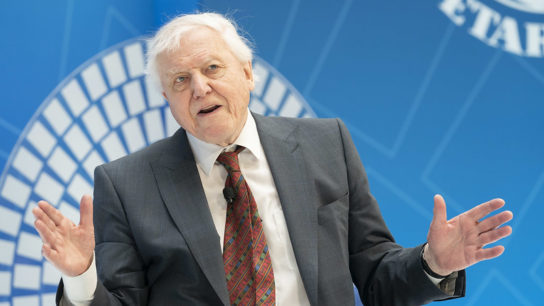More than 3,300 delegates – including members representing more than 170 nations and observers from more than 440 organizations – met last month in Busan, South Korea, to negotiate a global plastics treaty.
—
In a world grappling with an escalating plastic pollution crisis, the recent negotiations in Busan, South Korea, were seen as a crucial opportunity to forge a global treaty aimed at curbing this environmental menace.
But despite the urgency and the participation of over 170 nations, delegates left the table empty-handed, unable to bridge deep divides over critical issues such as production limits and hazardous chemicals.
So, what went wrong during these pivotal talks?
Background
The global plastic pollution crisis has escalated dramatically over the past few decades. With approximately 400 million metric tons of plastic produced annually – a figure projected to rise by 70% by 2040 – the need for a cohesive international response has become urgent.
In response to the escalating crisis, the United Nations in 2022 initiated a process to create a legally binding international treaty aimed at curbing plastic pollution, culminating in last month’s meeting in Busan.

The fifth round of negotiations was meant to finalize a treaty framework that would address not only waste management but also the production and design of plastics. However, the talks ended without agreement despite extensive discussions involving about 3,300 participants, including government delegates and civil society representatives.
Key Issues Leading to Deadlock
Multiple factors contributed to the failure of the Busan negotiations.
Diverging National Interests
A significant divide emerged between two main coalitions: the High Ambition Coalition (HAC), which seeks a comprehensive treaty that includes commitments to reduce plastic production, and the like-minded group, led by oil-producing nations such as Saudi Arabia, Russia, and Iran.

The HAC advocates for binding agreements to phase out harmful plastics and chemicals, while the like-minded group prefers a focus solely on waste management and recycling. This fundamental disagreement stymied negotiations, as each side remained entrenched in its position without finding common ground
Production Reduction Targets
One of the most contentious issues was whether the treaty should include specific targets for reducing global plastic production.
Many countries, particularly those aligned with the High Ambition Coalition, argued that curbing plastic production is essential to effectively tackle pollution at its source. They advocated for binding commitments to limit the production of primary plastics, which is expected to triple by 2050 if left unchecked.
Conversely, a coalition of oil-producing nations, including Saudi Arabia and Russia, opposed any language in the treaty that would impose restrictions on production. The group emphasized that the focus should be on waste management and recycling rather than limiting production itself. Their stance was rooted in economic concerns, as many of these countries have significant investments in fossil fuels and petrochemicals, which are integral to plastic manufacturing.
Chemicals of Concern
Another major point of disagreement revolved around the regulation of hazardous chemicals used in plastic products. The High Ambition Coalition sought to include strict bans and restrictions on certain chemicals deemed harmful to human health and the environment. They argued that without addressing these chemicals, any treaty would be ineffective in mitigating the adverse impacts of plastic pollution. In contrast, representatives from oil-rich nations expressed reluctance to endorse stringent chemical regulations. They argued that such measures could disrupt their industries and insisted instead on focusing on downstream solutions like waste management. This divide highlighted a fundamental clash between environmental priorities and economic interests.
Waste Management vs. Comprehensive Solutions
The negotiations also revealed differing perspectives on how best to address plastic pollution. While many countries supported a comprehensive approach that includes measures across the entire life cycle of plastics – from production to disposal – others preferred a narrower focus on waste management strategies.

Countries advocating for a comprehensive treaty argued that merely improving waste management would not suffice given the projected increase in plastic production. They emphasized that addressing the root causes of plastic pollution requires a holistic strategy that encompasses production limits, product design improvements, and enhanced recycling efforts. On the other hand, some nations maintained that prioritizing waste management would be a more pragmatic approach, especially given their existing infrastructure limitations.
Financing Mechanisms and Economic Disparities
The issue of financing was another critical area of contention during the Busan talks. Many developing nations expressed concerns about their ability to implement treaty provisions without adequate financial and technological support. They called for mechanisms to facilitate technology transfer and funding for initiatives aimed at reducing plastic pollution. However, wealthier nations were hesitant to commit significant financial resources without first establishing a clear framework for action within the treaty.

This reluctance created tension between countries seeking ambitious commitments and those concerned about financial implications. The lack of convergence on financing mechanisms ultimately hampered progress towards an agreement.
Consensus vs. Voting Rules
The procedural dynamics of the negotiations also played a role in stalling progress. Delegates faced challenges in agreeing on voting rules and procedures for resolving disputes. Some countries advocated for consensus-based decision-making, while others pushed for majority voting as a means to break deadlocks. This disagreement over procedural matters highlighted deeper divisions among countries regarding their willingness to compromise and collaborate effectively. The inability to establish clear rules contributed to a sense of frustration among negotiators and hindered meaningful discussions on substantive issues.
The Chair’s Text: A Step Forward or a Stumbling Block?
Despite the deadlock, negotiators did agree on a preliminary document known as the “Chair’s Text,” which outlines potential pathways for future discussions. The document is intended as a starting point for resumed negotiations scheduled for 2025. However, it remains laden with brackets indicating unresolved issues, leaving significant gaps that need to be addressed before any binding agreement can be reached.

Inger Andersen, Executive Director of the UN Environment Programme (UNEP), acknowledged that while progress was made in understanding each country’s positions and challenges, critical divergences persisted.
Civil Society and Public Pressure
The Busan negotiations were not just a governmental affair but also marked by significant public engagement. Before the talks, over 1,500 activists marched in Busan demanding robust action against plastic production. They emphasized that any effective treaty must include targets for reducing primary plastic production and address human rights issues linked to environmental justice.
This grassroots pressure highlights an essential aspect of international negotiations: public sentiment can influence governmental positions and push for more ambitious outcomes. A critical flaw that may have hindered progress was the absence of strong civil society representation during negotiations.

Looking Ahead: What’s Next?
With no agreement reached in Busan, countries will reconvene in 2025 (it is still unclear when and where) to continue discussions. There is cautious optimism among many delegates who believe that momentum is building towards a stronger treaty framework. The unity displayed by over 100 nations advocating for binding commitments suggests that there is still hope for achieving meaningful change. However, significant challenges remain:
- Addressing Financial Mechanisms: A crucial aspect of future negotiations will be establishing financial mechanisms to support developing nations in implementing treaty provisions.
- Building Consensus: Finding common ground among diverging national interests will require diplomatic finesse and possibly new compromises that address both environmental goals and economic realities.
- Strengthening Civil Society Engagement: Ensuring that civil society voices are included in future discussions may lead to more comprehensive solutions that reflect public concerns about plastic pollution.
The failure of the Busan negotiations marks a significant setback in global efforts to combat plastic pollution. However, it also serves as a reminder of the complexities involved in international diplomacy where economic interests often clash with environmental imperatives. As nations prepare for renewed discussions, there is an opportunity to build on the lessons learned from Busan and strive for an agreement that truly addresses the urgent need to reduce plastic pollution globally. The road ahead is fraught with challenges, but with continued advocacy and commitment from all stakeholders, governments, civil society, and industry remains hope for a robust global treaty that can effectively tackle one of the most pressing environmental issues of our time.
This story is funded by readers like you
Our non-profit newsroom provides climate coverage free of charge and advertising. Your one-off or monthly donations play a crucial role in supporting our operations, expanding our reach, and maintaining our editorial independence.
About EO | Mission Statement | Impact & Reach | Write for us














